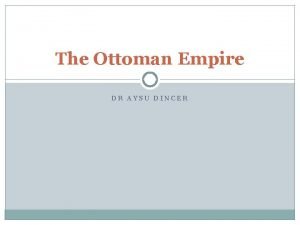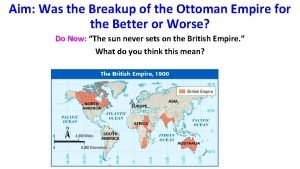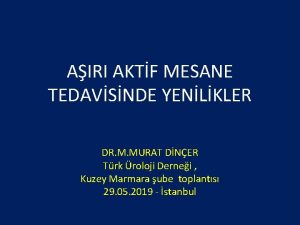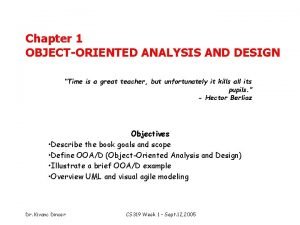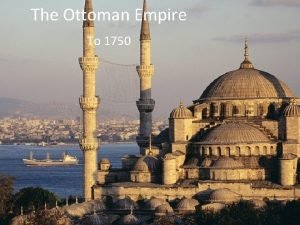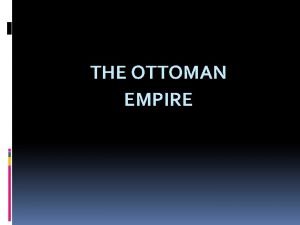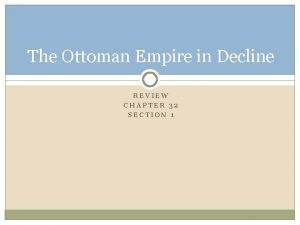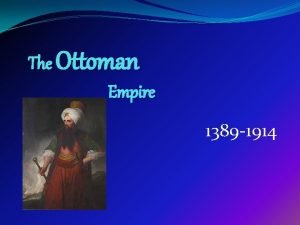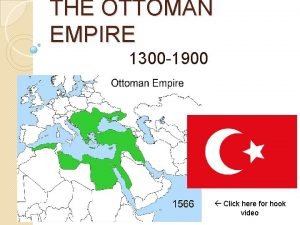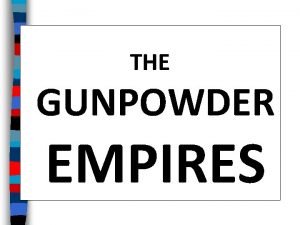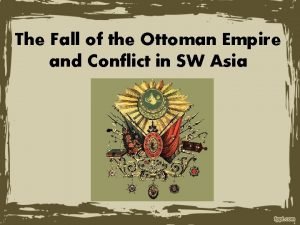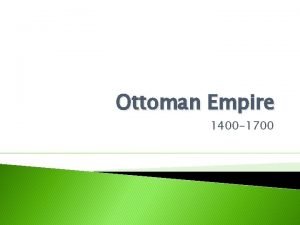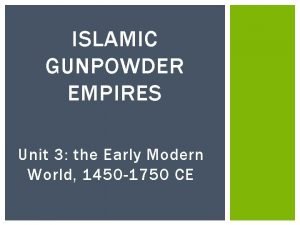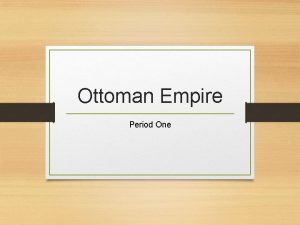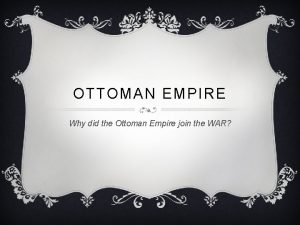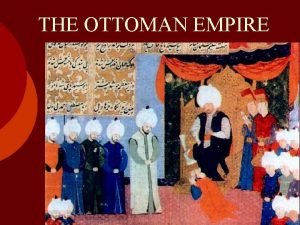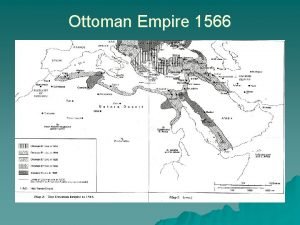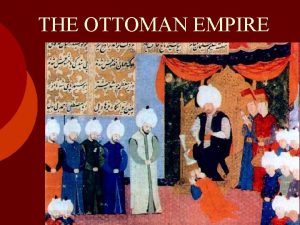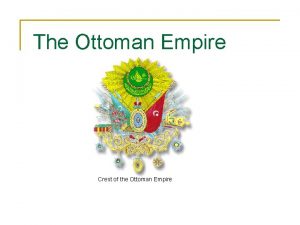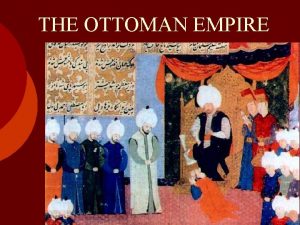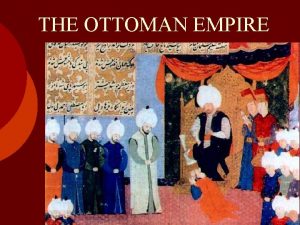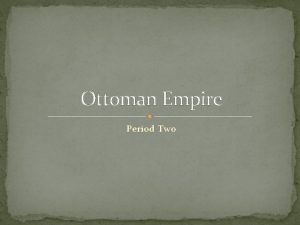The Ottoman Empire DR AYSU DINCER Why should














- Slides: 14

The Ottoman Empire DR AYSU DINCER

Why should we study the Ottoman Empire? �At its height, Ottoman territories spread over three continents �It was the inheritor and synthesizer of Roman, Mongol, Arab, Persian and Byzantine traditions �An opportunity to think about practices of governance, culture, and economics that were in transformation from the late medieval period into the early modern period (and beyond). �An imperial system full of adaptation, innovation, tension and contestation.

Ottoman Empire



Territorial Expansion

The Fall of Constantinople 1453 �Mehmed II (‘The Conqueror’) adopted the title: 'Kaysar (Caesar) Basileus Padishah-i Konstantiniyye and Rum'

Sultan Suleyman the Lawgiver (Kanuni) or Magnificent (r. 1521 -1566) �conquered Hungary, including Budapest �besieged Vienna(without success) in 1529 �pushed the Ottoman borders to the Red Sea, and the Indian Ocean. �consolidating all past sultanic judgements into a law code, called the Kanunname

The Royal Household �Empire never divided among sons �Practice polygyny (multiple wives/concubines) �Fratricide

The Ottoman System of Governance �‘reaya’ or ‘askeri’ �Ulema: religious elite �A multi-ethnic and multi-faith state �Various languages spoken �Non-Muslims have dhimmi status, can practice their own religion, as long as they all pay the jizya/cizye tax �Also toleratant towards other branches of Islam, such as mystical Islam (Sufism) �Law: Sharia courts which implemented Islamic law; also recourse to the kanun, Sultanic law

Trade and the Economy � An emphasis on the welfare of the subjects of the empire � Jewish, Armenian and Greek Orthodox subjects active as merchants in European towns � 'Capitulations' (ahdname): Ottomans granting mutually beneficial trading privileges to French, Dutch and English merchants

Military Organisation �Timar system �Janissaries: devshirme system �Combination of light cavalry, firearms, siege warfare and naval warfare

17 th-century Changes �Long and bloody wars against the Habsburgs and Safavids �Janissary numbers increase from 16, 000 to 40, 000 �Both factors leading to a strain on the treasury �Fiscal changes: timar system replaced by tax farming (held by private individuals) �Rise of a cash economy (but also increasing inflation) �Uprisings (firearms commonly held and used).

The ‘Decline’ Paradigm �Decentralised state (rise of tax-farmers + provincial elites + alternative centres of power)= decline? �‘. . the decline model is not so much wrong as entirely insufficient; it conceals behind its visage simply too much that was creative, enduring, and resolute. ’ (Daniel Goffman, The Ottoman Empire and Early Modern Europe (2002), p. 127)
 Ottoman empire balkan
Ottoman empire balkan What led to the breakup of the ottoman empire
What led to the breakup of the ottoman empire Murat dinçer üroloji
Murat dinçer üroloji Kivanc dincer
Kivanc dincer Vazospastik angina nedir
Vazospastik angina nedir Ottoman empire 1815
Ottoman empire 1815 The ottoman empire grew and expanded after it conquered the
The ottoman empire grew and expanded after it conquered the Map of ottoman empire 1800
Map of ottoman empire 1800 Was the ottoman empire tolerant of other religions
Was the ottoman empire tolerant of other religions Saltanat e usmania map
Saltanat e usmania map Ottoman empire at its height
Ottoman empire at its height What did the ottoman empire turn into
What did the ottoman empire turn into Ottoman empire 1400
Ottoman empire 1400 Ottoman safavid and mughal empire map
Ottoman safavid and mughal empire map Islamic gunpowder empires
Islamic gunpowder empires
